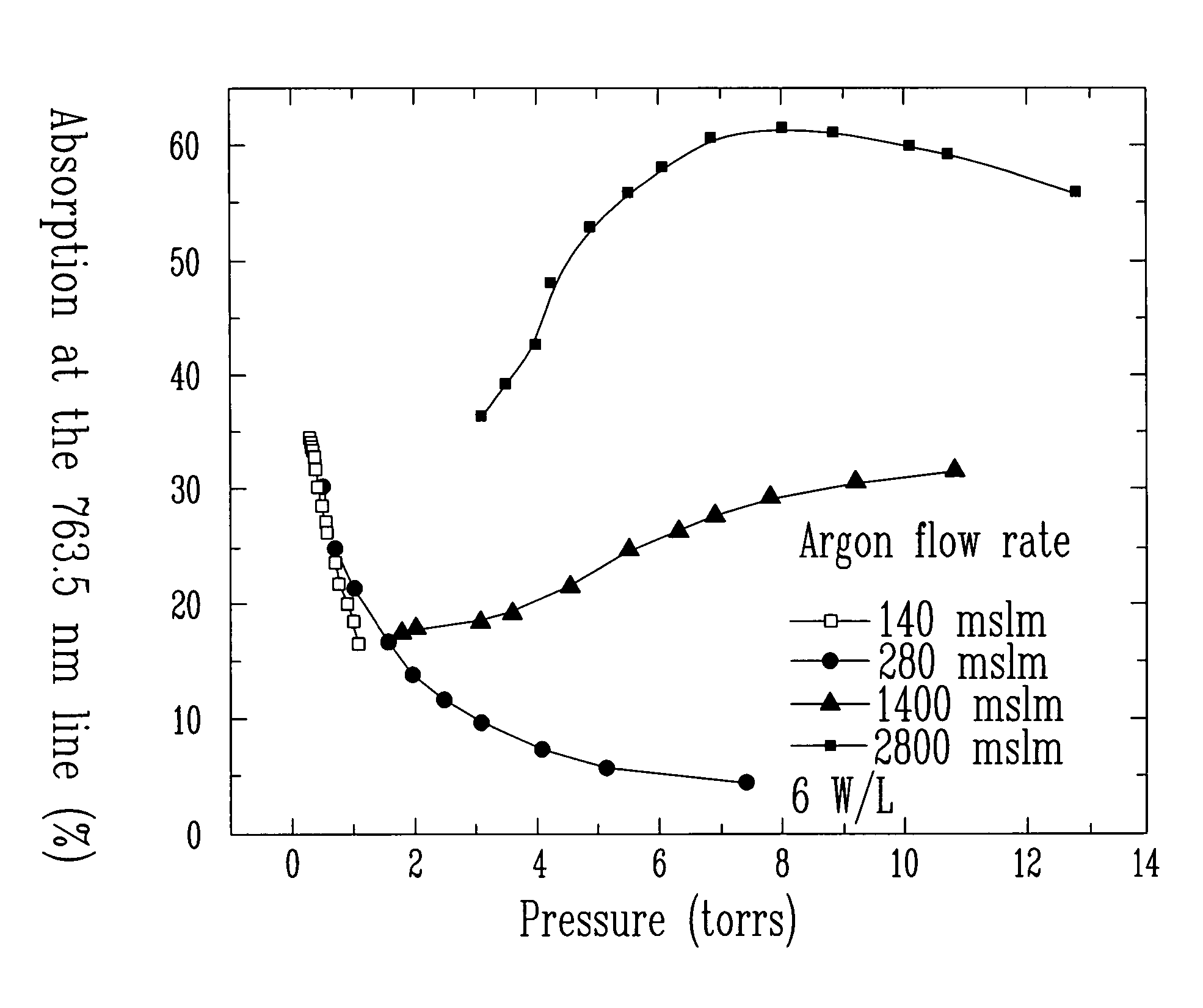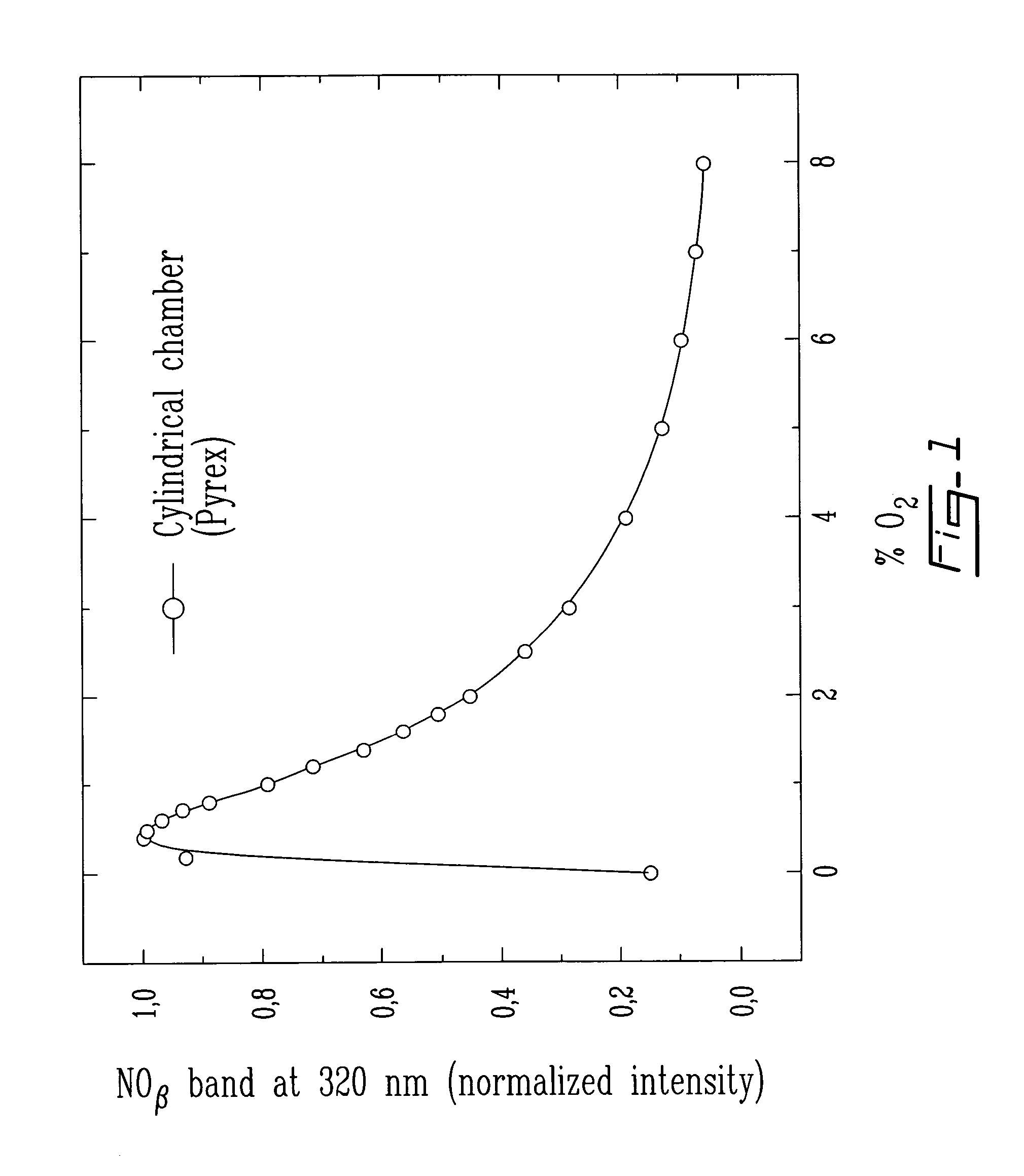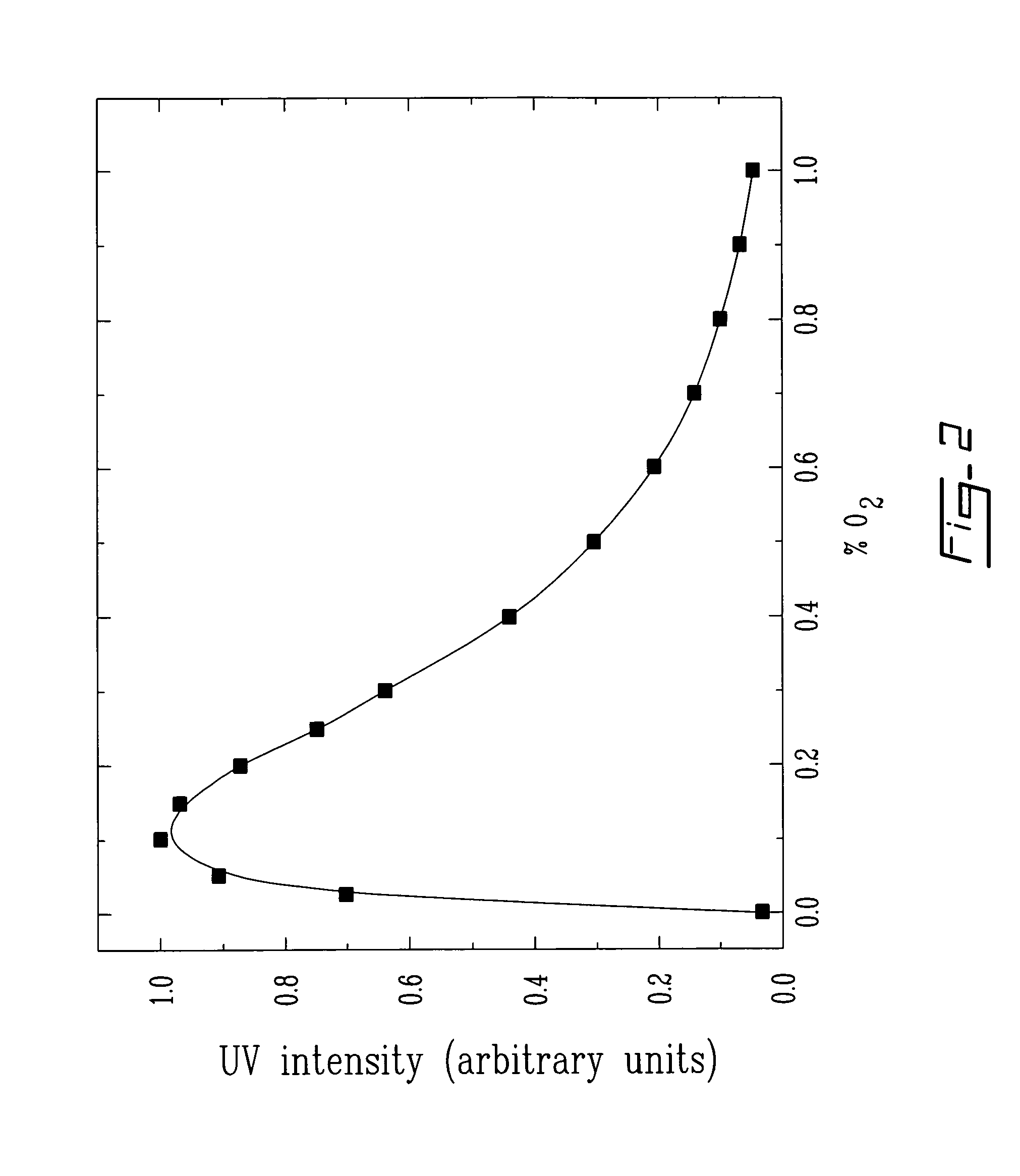Processes and devices for sterilizing contaminated objects
a technology for contaminated objects and processes, applied in the field of process and device for sterilizing contaminated objects, can solve the problems of inability to achieve significant breakthroughs in sterilization, process and device tend to damage or deteriorate the objects to be sterilized, prior art processes have limitations,
- Summary
- Abstract
- Description
- Claims
- Application Information
AI Technical Summary
Benefits of technology
Problems solved by technology
Method used
Image
Examples
examples
Description of a Commercial Form of Plasma Sterilizing Device
[0074]The present device is presented by way of illustration only and should not be interpreted as constituting any kind of limitation to the object of the present invention. It comprises three main elements: a plasma source, a sterilization chamber where the objects to be sterilized are disposed (for example, on grids (acting as support)), and a vacuum pump to: 1) initially evacuate the chamber to a residual pressure of about 20-50 mtorr, and 2) thereafter maintain the desired pressure in the presence of the gas flow rate while simultaneously making sure that the active species are renewed by continuous evacuation of the gases. The tested sterilization chambers were built of aluminum, which is a light and inexpensive material. They may by cylindrical or parallelepipedal. Means for supporting objects (such as a grid) to be sterilized are integrated in the chamber, and the latter is advantageously provided with an access do...
PUM
| Property | Measurement | Unit |
|---|---|---|
| frequency | aaaaa | aaaaa |
| pressure | aaaaa | aaaaa |
| pressure | aaaaa | aaaaa |
Abstract
Description
Claims
Application Information
 Login to View More
Login to View More - R&D
- Intellectual Property
- Life Sciences
- Materials
- Tech Scout
- Unparalleled Data Quality
- Higher Quality Content
- 60% Fewer Hallucinations
Browse by: Latest US Patents, China's latest patents, Technical Efficacy Thesaurus, Application Domain, Technology Topic, Popular Technical Reports.
© 2025 PatSnap. All rights reserved.Legal|Privacy policy|Modern Slavery Act Transparency Statement|Sitemap|About US| Contact US: help@patsnap.com



